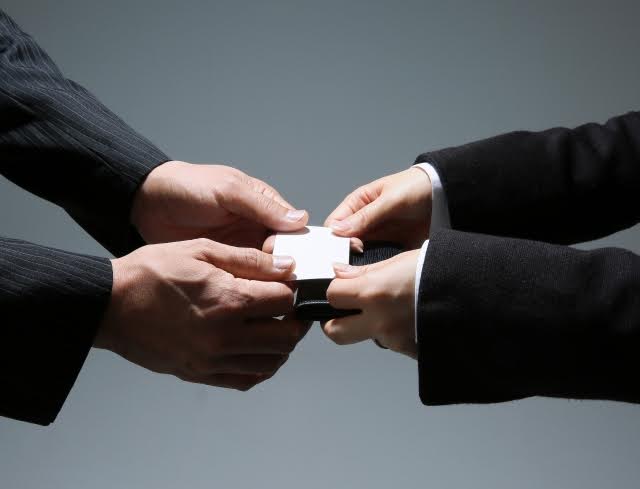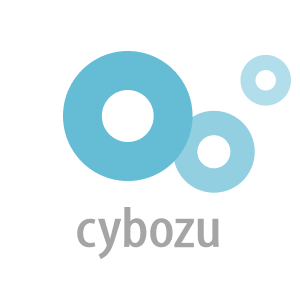Updated August 28, 2025
The Business Etiquette Starter Pack: Tips to Help You Adjust to Japanese Corporate Life
Ask one hundred people their advice on business etiquette, and you can get as many different answers. Keep in mind that this article is only one perspective and may not apply to your personal situation or communication style.
In cross-cultural communication, there is no “100%” way to do things. There is too much culture packed into a day at the office to cover it all. I am going to highlight a few key items I found helpful to my own career to help you get started.
In this article: 📝
1. Introducing yourself with a “jikoshokai”
After joining a new company or team, you will most likely have to introduce yourself, and often. This ritual introduction of the self is “jikoshokai.” Jiko (自己) is ‘the self’ and ‘shokai’ (紹介)means to introduce.
Flashback to my early career days. I was thrown into a jikoshokai situation not expecting 200 people to be waiting for me to finish talking about myself so they can get back to work.
The impromptu speech had no direction, was long, and trailed off into a long pause followed by an awkward “hai” (はい) as I pushed the microphone back to the speaker. Since then, I have witnessed plenty of jikoshokai deaths by others.
A poor jikoshokai creates an impression of incompetence or a lack of Japanese language ability, which may not represent reality.
On the other hand, a good jikoshokai will feel good and help you stand out. If I could go back in time to coach my past self on effective jikoshokai, here is what I would say:
-
Short is sweet, and sweet is memorable
-
Prepare an internal jikoshokai as well as and external version for clients or vendors
Crafting an internal jikoshokai
Let’s prepare a short internal jikoshokai right now with the following two parts.
-
Who are you ( Name / Position or Role / when you joined if that’s relevant)
-
One fact (or two) that relate to a way that a person can remember you or something that people can spark a conversation about later.
「4月から入社しました、開発部の〇〇です。よろしくお願いします!」
「猫が大好きで、実家に一匹飼ってます。猫飼っていたら仲良くしてください。」
Here’s a rough translation of that in English: “Hello, It is nice to meet you all, I am 〇〇. I started working in the Dev team here in April. I love cats, so if you're into them I’d love to share pics with me feel free to reach out!”
Sure, it’s not going to win any awards, but now you associate yourself with cats or whatever you decide to talk about. It can be a nice ice-breaker for later.
I like to appeal to my Japanese and foreign heritage by saying my full name. Because it is difficult to pronounce, I say something like this.
「初めまして、ヤベ・ドゥルーレイです。ヤベ、ブルーレイだと発音しやすいです。」
Roughly translates to “Hi, I am Yabe Duruz Rei. You can pronounce it like Blu-Ray.” It’s catchy and has successfully sparked the conversation about my background for those that were genuinely interested.
Before I get hounded by criticisms, I want to point out again that this is merely one way to approach the jikoshokai. There are many more elements and business-like phrases you can use, but you will pick them up along the way.
The external jikoshokai for clients and vendors
This is more formal, which means it is more robotic in structure.
Company Name (if necessary) + Role/Position + Name + と申します。どうぞよろしくお願いいたします。
「株式会社〇〇、開発部の〇〇と申します。どうぞよろしくお願いいたします。」
“It is a pleasure to meet you, I am 〇〇 from the Dev team. I look forward to working with you on this project.”
Perhaps your company will have a preferred method, so be flexible enough to adapt as necessary. For example, you can swap out a「申します」for a「です」if the existing relationship seems to be more casual.
2. “Meishi-kokan” the great business card exchange
Next I want to introduce a little about “meishi-kokan” (名刺交換)or the business card exchange. You will likely engage in this dance as often as you will use the external jikoshokai.
From my personal experience, I can tell you that business cards are held in higher regard and treated with more respect in Japan than in America. It’s important enough for companies to invest time and resources to teach their new-grad hires the art.
In this day and age, I imagine a majority of the workforce do not care too much about these procedures. So why bother then?
Of course you want to avoid unnecessary attention from the people that do care. They are the detail oriented ones and will likely make or break your experience working on the upcoming project. Getting off on the wrong foot can be cumbersome.
But in my opinion, there is a more important reason to step in line than pleasing the minority. Meishi-kokan is a golden opportunity to show that you are culturally literate beyond anime, and on-board with the deeper roots of Japanese tradition.
The perception of respect will go a long way. It seems counter intuitive, but showing that you “get-it” and that you care about the way things are done, is an enormous piece of trust that will be useful later on to enact change.
The Dos and Don’ts of Meishi-kokan
Do:
-
Carry a meishi-case You will use the case like a tray when presenting your meishi. It will also serve as a kind of pedestal if you are sitting at the table, where it will sit for the duration of the meeting. You can find a cheap one at Daiso. Or a nicer one in any number of shops including LOFT.
-
Receive a meishi gracefully As you receive a meishi, say “choudai-itashimasu” (頂戴いたします) Use both hands, your fingers grasping the bottom corners.

If you are doing a simultaneous give and take, receive on the left and give to your right.

-
Trim your fingernails (at least the thumbs) This is possibly the closest you may ever come to physical contact with this person ever. Don’t let dirty or unkempt nails detract from the exchange.
-
If you have nail polish, keeping the colors subdued is the conservative approach.
-
Do not:
-
Do not put it into your pocket or bag after receiving a meishi
Look at the contents, immediately (or at least go through the motion). Look for their name, their title/role, or any other tidbit of information. Disregarding their meishi could give off the impression that you don't care about this interaction.-
For bonus points, flip it around to unlock more content.
-
Advanced techniques include commenting on that content.
-
-
Do not write on a meishi (at least not where anyone can see you) Think of the meishi as a face. It would be rude to write on a person’s face. Once you're away, it’s fine to write some notes on it to help you remember the person or context of the meeting.
-
Do not present bent or dirty meishi Remember, it is your face too. Tell them you have just run out of them. This is also a handy excuse In the event you forget to bring them from home.
This article doesn’t even cover the half of it. There are countless resources going on about the subject in Japanese, like this one here.
3. Japanese email anatomy 101
Japanese emails might seem intimidating at first. It takes some getting used to.
San or Sama or nothing
Before we can talk about structure, we need to cover the most basic usage of honorifics.
Much like the jikoshokai, the rules change between internal and external emails.
|
Internal Email |
External Email |
|
|
Reference to internal member |
〇〇さん |
〇〇(no honorific) |
|
Reference to external member |
〇〇様 |
〇〇様 |
|
Reference to vendor |
Ask a team member |
Ask a team member |
The one I want to point out is the external email with a reference to your own team. It does seem a bit weird that you would not say a person’s name without a -san or -sama, but I don’t make the rules.
The meat of the message
A Japanese business email is not all too different from what you should already be used to. I am going to skip over the subject line and how to arrange the CC and BCC. You’ll have to defer to the way your colleagues format an email. Let’s get to the body of the message.
At the top of the body goes the greeting followed by your identification.
When in doubt, just use this format and you’ll be safe.
============================
株式会社〇〇 〇〇事業部 〇〇様
いつもお世話になっております。
株式会社△△の△△です。
============================
After a few correspondences, the opposite party likely will start to shorten this up and you are clear to follow suit:
============================
△△様
いつもお世話になっております。
〇〇の〇〇です。
============================
Hacking the rest of the message
No one likes to read long emails, so why not keep it simple using bullet points? Benefits include simplified grammar and clear direction.
If you need your client to check on items a, b, c, and d with different due dates, here’s one way you might write that out.
============================
箇条書きで失礼します。
4/10までに確認・回答いただきたいこと:
・a
・b
4/20までに確認・回答いただきたいこと:
・c
・d
===========================
Of course, apologize for being crude by using bullet points. After that you’re free to write a concise message.
Bullet-points are not the cure-all, so you’ll have to use all the resources at your disposal. Colleagues will be happy to help you out, but in a pinch you can use the wonderful world of the internet. Copy and paste baby!
This Japanese Business Email Resource is divided up by category to help you in specific scenarios.
Closing it up
The closing is another one of those things you just do. You can have it saved as part of your signature so you never have to think about it.
============================
何卒よろしくお願い致します。
△△
============================
4. Be on-time (aka 5 minutes early)
Ride the train in Japan and you will see the best example of time management there is. It might even be a point of pride for the Japanese that the trains run on time.
Use google maps, and get a few train apps to ensure you get to where you need to be early. If you have booked a meeting room, be ready ahead of time to give yourself time to set up.
Be a train my friend.
5. Some more tips
The Japanese language is so difficult. But let me introduce some tips to help you fake it til you make it.
Aizuchi
The first thing is to master “aizuchi” (相槌), the art of reassuring the speaker with acknowledgement that they are being heard. It is not so much about the words, as it is about the rhythm of the conversation.
Here are some words or actions you might use:
-
hai (はい), ee (ええ), or un (うん, "yes", with varying degrees of formality)
-
sō desu ne (そうですね, "I see")
-
sō desu ka (そうですか, "is that so?", "really?")
-
nodding
Source: Wikipedia
It may take some time to get used to these interjections. Some of your colleagues or clients will actually wait for a verbal cue before finishing a sentence. This might be especially true over the phone or on video conferencing.
Just be able to recognize it, and you will be fine.
Make your opinion count, but don’t discount wrong answers straight away
You are allowed to have an opinion, but you don’t want to steamroll your way over others. Diplomacy will help you win people over. Cushion statements are phrases you can use to acknowledge opposing opinions and ease into your point. Think of it as a type of aizuchi.
It can be anything, even as simple as saying “arigatougozaimasu” (ありがとうございます)
If you come out swinging with a “no” it just sounds harsh. Cushion statements can make you sound like a team player.
Body language
Don’t point with your finger. Get in the habit of signaling with your whole hand.

Gesturing, tapping, arm-crossing, and prolonged eye-contact can be interpreted as aggressive and should be kept to a minimum. Use aizuchi to indicate you are actively engaged.
Slouching, leaning back in your seat, or crossing your legs when someone approaches you to speak is considered rude. Sitting up gives the impression that you care and are open to communication.
6. Advanced Japanese hierarchy
“Kamiza” (上座) or the “high-seat” is another one of those concepts that new-hires get trained in. This concept deserves its own handbook, but here I will cover how to recognize some common ones.
-
Meeting rooms: The furthest from the door, usually facing toward a window with a view
-
Restaurants: This depends, but you can seek out the “low-seat” which is close to the server.
-
Taxis: Behind the driver is the kamiza. The passenger seat is the “low-seat.”
The kamiza hack
When in doubt, wait. Don’t be the first to sit. If someone offers you a seat, refuse it and offer it back. You can reluctantly accept it.
In summary
Be respectful and reasonable people will return the sentiment.
No one expects you to be perfect, and neither should you. Most people appreciate the effort.
Your Japanese co-workers will be more open to change if they believe that you are one of them in spirit. Acknowledging the status-quo in this way gives you an edge in the long-run.
Be conscious of these customs so that you can pick your battles. Transform them into your weapons for a successful career.
Get Job Alerts
Sign up for our newsletter to get hand-picked tech jobs in Japan – straight to your inbox.









